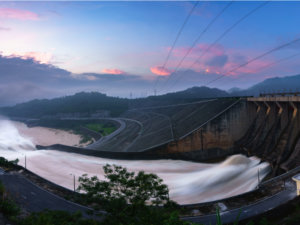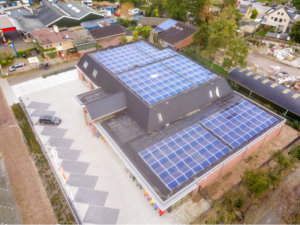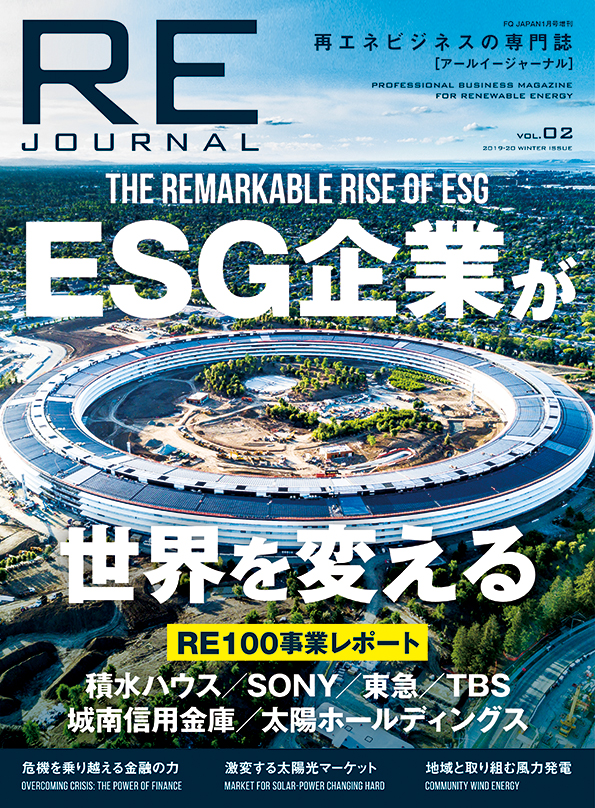太陽光マーケットは、FITの抜本見直しでFIPを軸の支援制度へ
2020/10/27
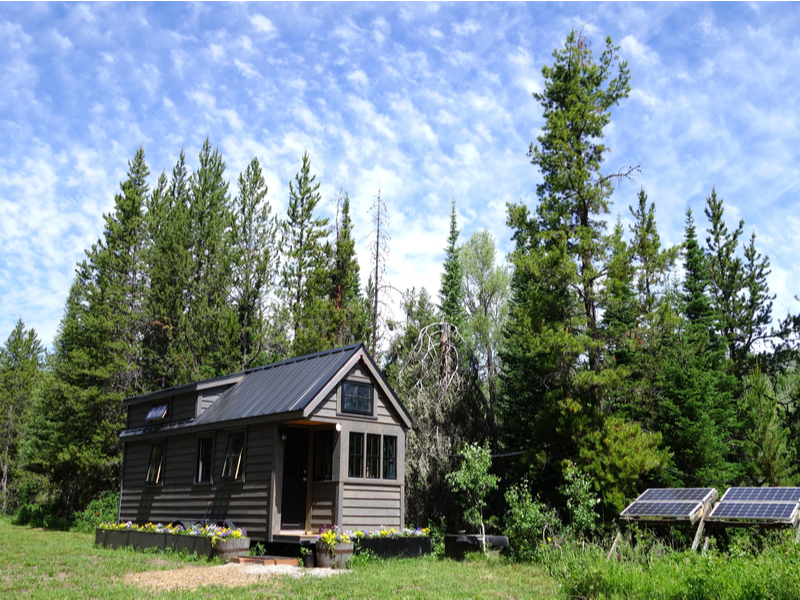
日本の太陽光マーケットはどんな変化が訪れるのか。FITは抜本的に見直され、日本版FIP(市場価格上乗せ制度)が適用される。具体的な制度の内容を見ていこう。
FIT抜本見直し
FIPを軸の支援制度へ
FITは制度を全面的に見直し、新たな支援制度へ移行する。経済産業省は2020年の通常国会に改正FIT法案を提出し、2021年度からの新たな支援制度の実施を目指す。
大規模太陽光発電や陸上・洋上風力、大規模地熱は「競争電源」として、FITから自立を見込める電源として、固定価格買取から除外されて日本版FIP(市場価格上乗せ制度)が適用される。FIPは市場価格にプレミアムとして補助金が上乗せされる支援策。大規模太陽光や風力発電、大規模地熱発電事業者は、発電した電気を卸電力市場や相対取引で自由に売電する。そこに「あらかじめ決めたFIP価格と参照価格の差(プレミアム)×売電量」を補助金としてもらえるようになる。
例えば、参照価格を12円/kWh、FIP価格を14円/kWhとすれば、1kWh当たり2円の補助金を発電事業者は受け取れるようになるイメージだ。
ただ参照価格を卸電力市場価格との直接連動にしてしまうと、再生エネ発電事業者の収入は市場の動きに応じて大きく変化してしまう。日本卸電力取引所(JEPX)は欧米の卸電力取引所に比べると取引量の厚みがなく取引価格の乱高下が激しい。例えば、取引低価格が想定以上に長く続くなどのリスクがある。
そこで新たな制度では、1ヶ月~1年程度などの一定期間ごとに参照価格を調整するなどして、再生エネ発電事業者がある程度の安定した投資回収見通しを確保できるような仕組みも制度に取り入れていく。つまり、再生エネ発電事業者が市場を意識した行動を促しつつFITのように発電量に応じてある程度の安定した売電収入を得られることができる日本独自のFIP(図1)にする。
図1:日本独自のFIP制度のイメージ
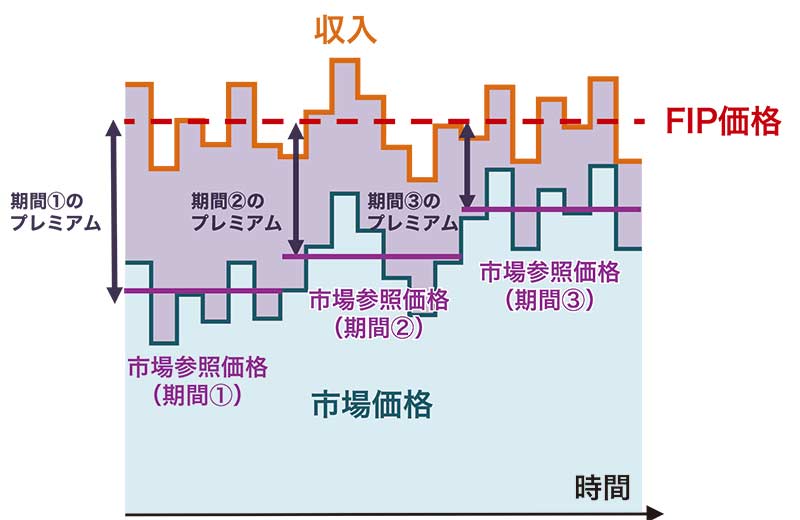
出典:経済産業省資料
低圧野立て太陽光は対象外に
中規模は地域一体型でFIT維持
出力50kW未満の低圧事業用太陽光発電は発電全量を売電できた従来制度から、住宅用太陽光発電と同様に余剰電力のみFITで売電できる制度に2020年度以降変更する。対象となるのはオフィスビルや工場の屋根などに設置される10kW以上50kW未満の小規模事業者だ。設置した建物の自家消費を前提とした余剰電力買取制度なので、自家消費する建物がなく平地に野立てで設置する10kW以上50kW未満太陽光は対象外となる。小規模事業用太陽光の余剰買取制度変更はFIT法を改正しなくても実施できることから、調達価格等算定委員会で制度詳細を決めて、2020年度から実施する予定だ。
50kW以上の高圧案件で競争電源の枠に入らない中規模の太陽光発電は、地域一体型電源として現行のFITの基本枠組みを当面維持することになる。
地域一体型とは、災害時に太陽光発電を地域住民に利用されることを前提とする、レジリエンス強化(国土強靭化)につながる分散型エネルギーシステムを指す。災害により停電が発生したときに、太陽光発電設備で発電された電気の活用を、地方自治体の防災計画などに位置付けられていることが、地域一体型に認定される要件になる予定だ。
そしてゆくゆくは、地域マイクログリッドのように、平時は既存の系統配電網を活用しながら、緊急時にはオフグリッド化して地域内に電力融通するシステムを地域一体型の理想像とする。ただ、こうした地域一体型はまだその具体的な方法を実証事業(図2)などで確立中であることや、事業採算性の確保に課題があることから、まだ地域一体型の認定要件にするには時期尚早となっている。
図2:地域マイクログリッドのイメージ
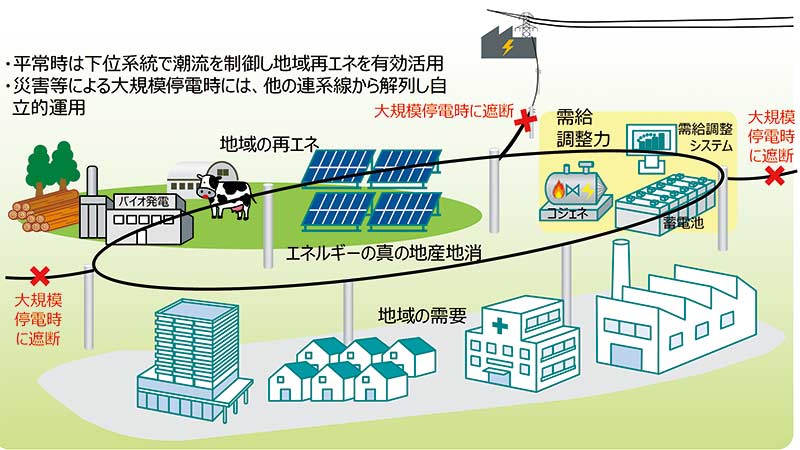
出典:経済産業省資料を一部筆者修正
A drastically changing solar market
An outlook on the future of the drastically changing solar market in Japan, including the transition from Feed-in Tariff (FIT) to Feed-in Premium (FIP) and the generator-side base charge system.
Text: Sho Minamino
A fundamental review on the FIT policy Setting the FIP as the base of the new support system
A fundamental review and revision of the current Feed-in Tariff (FIT) system is ongoing, and a new support system will be introduced. The Ministry of Economy, Trade and Industry (METI) will submit the amended FIT bill to the ordinary Diet in 2020, aiming to implement the new subsidiary system starting in FY2021. In the new system, large-scale solar power plants, onshore/offshore wind power plants, and large-scale geothermal power plants will be regarded as “competing power sources” which can be separated from the FIT scope, thus excluding it from the fixed-price purchase scheme. Instead, the Japanese version of FIP (i.e. market bidding system) will apply to those energies listed. Feed-in Premium (FIP) is a support measure in which “premium” subsidies are added on top of market-based prices. Generators of large-scale solar, wind, and geothermal powers will be able to sell produced electricity in the power wholesale market and/or negotiation transactions freely. These subsidies will be calculated as the difference between the predetermined FIP price and the market reference price (i.e. premium), multiplied by the amount of electricity sold. For example, say the reference price was 12 Yen/kWh and the FIP price was 14 Yen/kWh. The power producer would then receive a subsidy of 2 Yen per kWh. It is important to note, however, that the revenues of renewable energy producers are greatly affected by market trends if the reference price is directly taken from the real-time wholesale market price. The Japan Electric Power Exchange (JEPX) has smaller liquidity compared to the wholesale power exchanges in the United States and Europe, subjecting itself to great fluctuations in transaction prices. There is a risk, for example, of unexpectedly prolonged low transaction prices. The new system will therefore incorporate a mechanism to ensure that renewable energy generators are able to hold a certain level of prospects on their investment recovery, for example, by reviewing and adjusting the reference price at regular intervals. This may be done on a monthly or annual basis. In other words, it intends to introduce a FIP system fitted to Japan, where renewable power generators are encouraged to act based on market trends while at the same time enabling some stable revenues from selling electricity based on the amount of power they generate in the same way they do under the current FIT scheme (Fig. 1).
Low voltage field solar projects are excluded Medium scale plants to become part of the regional integrated system under FIT policy
As of FY2020, commercial low-voltage solar power suppliers with a grid capacity less than 50 kW will only be allowed to sell surplus electricity under FIT, in the same way residential solar generators do. This is a change from the conventional system where all generated powers could be sold. Applicable entities will include small businesses whose office buildings and factories have solar panels with 10kW to 50kW grid capacity installed on their roofs. Since such panels are assumed to generate electricity for their own consumption, only the surplus power is eligible for the purchase system. On the other hand, field solar panels with 10kW to 50kW capacity installed on flat ground without self-consumption purpose are excluded from the scope. Because the change on the purchase scope, applicable to small-scale commercial solar power, can be executed without amendment to the existing FIT Act, it is scheduled to be implemented in FY2020 when all the details are finalized by the Procurement Price Calculation Committee of METI. The medium-scale photovoltaic power plants operating on high-voltage projects of 50kW or more do not fall into the “competing power sources”category. These plants will continue to operate as part of the regional integrated power supply under the basic frame of the current FIT policy for the moment. An integrated regional power supply refers to a decentralized energy system that builds resilience (land resilience) especially in the event of a disaster when the generated power can be supplied to residents. The use of electricity supplied by these facilities must be incorporated in the local government’s disaster prevention plan so that when a power outage occurs due to a disaster event these powers can be utilized. Certain criteria like this may be introduced as a requirement for mid-scale power facilities to become part of the integrated regional power supply. In the long run, an integrated supply system such as the regional microgrid would be ideal, where the existing grid is utilized under normal times and the system goes off-grid in case of an emergency to wheel electricity generated in the region. However, such regional integrated systems are still under a verification phase (Fig. 2) before they can be established, and some challenges related to business profitability exist. Therefore, it is considered too early to develop specific requirements for a regional integrated system at this stage.
取材・文/南野彰
RE JOURNAL vol.2(2019-20年冬号)より転載






